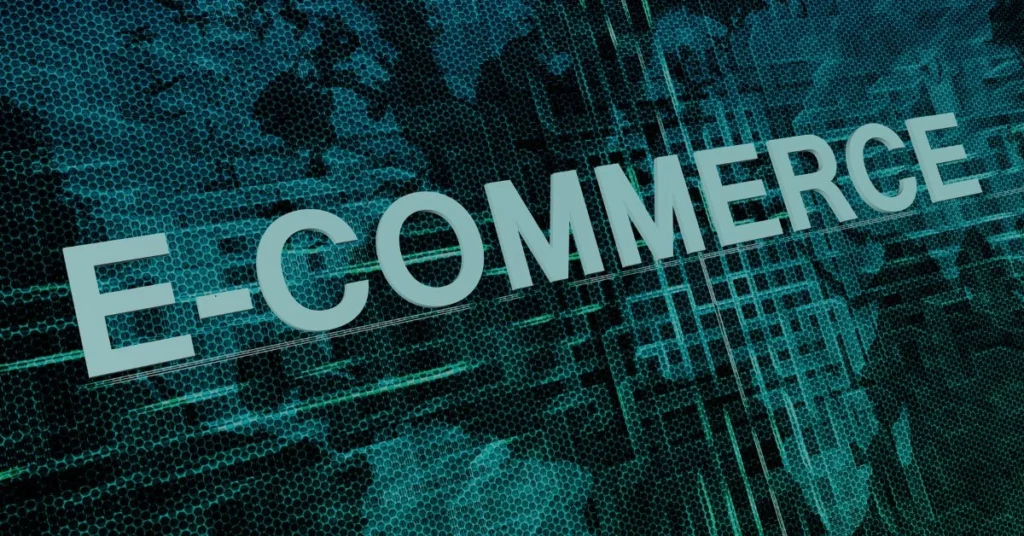Building Success with Web&Store: The Ultimate Guide to E-Commerce Growth
The internet has changed the way businesses operate. Having an online business is no longer optional—it’s essential. A strong digital storefront helps businesses reach more customers and grow faster.
Web&Store is a modern solution for entrepreneurs and businesses. It combines a website builder and an e-commerce platform into one seamless system. This makes it easier than ever to create a website and start online selling.
In the past, businesses needed separate platforms for their website and online store. Managing both was confusing and time-consuming. Web&Store eliminates this hassle by offering everything in one place.
This approach is perfect for small businesses, freelancers, and startups. It allows them to sell products online while maintaining a strong brand presence. No need for complicated coding or expensive development.
With Web&Store, users can build an e-commerce website with features like secure payments, shipping options, and inventory management. It simplifies the online retail experience and helps businesses thrive.
This blog post will explore everything you need to know about this e-commerce solution. From setting up your digital marketplace to optimizing for growth, we’ll cover it all. By the end, you’ll have a complete roadmap to success.
| Aspect | Fact/Details | Figures |
|---|---|---|
| Importance of Online Business | Online businesses are essential for growth and reaching a larger customer base. | N/A |
| Web&Store Solution | Combines website builder and e-commerce platform in one system, simplifying the creation of websites and online stores. | N/A |
| Target Audience | Small businesses, freelancers, and startups benefit from this integrated platform. | N/A |
| Key Features of Digital Storefront | Includes drag-and-drop website builder, secure payments, customizable templates, and SEO optimization. | N/A |
| E-Commerce Platform Types | Hosted platforms (e.g., Shopify, Wix) vs. self-hosted platforms (e.g., WordPress with WooCommerce). | N/A |
| Design Tips for Websites | Professional, clean layout, mobile-friendly, easy navigation, high-quality product images, and engaging headlines. | N/A |
| Product Page Features | Detailed product descriptions, high-resolution images, product categorization, search bar for easy navigation. | N/A |
| Payment and Shipping Setup | Multiple payment options (credit cards, PayPal, digital wallets), transparent shipping pricing, and instant delivery for digital products. | N/A |
| SEO and Marketing | Use relevant keywords in product titles and descriptions, social media marketing, email marketing, and influencer partnerships. | N/A |
| Growth Strategies | Leverage social media, email marketing, and analytics tools to monitor performance. | N/A |
| Performance Tracking | Analytics tools to monitor traffic and sales, and sell on additional platforms like Amazon and Etsy for expanded revenue. | N/A |
| Social Media Engagement | Use interactive content (polls, live demos) to engage with customers. | N/A |
| Email Marketing | Collect emails for exclusive offers, updates, and reminders to increase conversions. | N/A |
| SEO Optimization for Stores | Use relevant keywords, ensure fast website loading, and have high-quality images. | N/A |
| Shipping Management | Offer free shipping, flat rates, or real-time shipping costs, with clear pricing at checkout. For digital products, enable instant downloads. | N/A |
| Customer Retention | Send welcome emails, abandoned cart reminders, and exclusive promotions to retain customers. | N/A |
| FAQs | No coding skills needed, key features include secure payments and mobile-friendliness, SEO and email marketing essential for visibility and growth. | N/A |
| Payment Security | Secure payment gateways and multiple payment options are essential for customer confidence. | N/A |
| SEO for Online Stores | SEO optimizes product descriptions, titles, and images to improve visibility. | N/A |
Building the Foundation: Understanding Online Business Platforms

Running an online business requires more than just a website. You need a well-structured platform that integrates content and commerce. Understanding the key elements will help you maximize its potential.
What Is an Integrated Website and Online Store?
An integrated e-commerce website allows businesses to showcase their brand and sell products in one place. This setup streamlines operations and improves customer experience.
Instead of juggling multiple systems, everything is managed under one roof. This makes it easier to update content, track sales, and engage with customers. Business owners can focus on growth rather than technical issues.
Why Is This Model Important?
Consumers today expect a seamless shopping experience. They browse products, read reviews, and make purchases without switching platforms. A well-integrated e-commerce platform ensures smooth navigation.
When businesses operate from a single system, they build trust more effectively. A professional digital storefront increases credibility. Customers are more likely to buy when they feel secure.
This approach also enhances branding. A well-designed e-commerce website allows businesses to tell their story while selling products. This combination strengthens customer connections.
Key Features of a Strong Digital Storefront
A great online business platform should be user-friendly. Drag-and-drop website builders and customizable templates help create a professional look. No coding skills are needed.
Security is a top priority. Features like encrypted payments and secure checkout options boost customer confidence. A safe payment gateway reduces abandoned carts.
SEO for online stores plays a crucial role. A well-optimized digital marketplace ranks higher in search results. This increases visibility and attracts more visitors.
Creating Your Digital Storefront: Step-by-Step Guide

Setting up an online business is now easier than ever. You don’t need advanced technical skills or a big budget. Follow these steps to build a strong e-commerce website.
Step 1: Choose the Right E-Commerce Platform
There are many e-commerce solutions available. Hosted platforms like Shopify and Wix are user-friendly. Self-hosted options like WordPress with WooCommerce offer more flexibility.
Hosted platforms handle security features for e-commerce websites, hosting, and updates. They are ideal for beginners but may have monthly fees. Self-hosted platforms provide complete control but require maintenance.
Choose a solution based on your budget, technical skills, and long-term goals. A good e-commerce platform will grow with your business.
Step 2: Design an Engaging Website
A well-designed e-commerce website builds trust and attracts customers. Choose a clean, professional layout that matches your brand. Ensure it is mobile-friendly and easy to navigate.
Your homepage should clearly communicate what you sell. Use product photography tips like high-quality images and simple, engaging headlines. Avoid unnecessary clutter.
Add an “About Us” page to share your story. A personal touch helps customers connect with your brand. People buy from businesses they trust.
Step 3: Add Products and Services
Product pages should be detailed and visually appealing. Use writing product descriptions techniques to highlight benefits and features. High-resolution images improve engagement.
Organize products into categories for easy browsing. A search bar helps customers find what they need quickly. The goal is to make shopping effortless.
Step 4: Set Up Payment and Shipping
A secure payment gateway is essential for transactions. Offer multiple payment options like credit cards, PayPal, and digital wallets. A variety of choices increases convenience.
Clearly define shipping options for online businesses. Free shipping, flat rates, or real-time shipping costs should be transparent. Customers appreciate clear pricing before checkout.
If selling digital products, set up instant delivery. Automated downloads ensure buyers receive their purchases immediately. This improves satisfaction.
Step 5: Optimize for SEO and Marketing
SEO for online stores helps customers find your website. Use relevant keywords in product titles, descriptions, and blog content. The better your SEO, the more visitors you attract.
Social media marketing for e-commerce drives additional traffic. Platforms like Instagram, Facebook, and Pinterest are great for promotions. Engaging content increases brand awareness.
Email marketing for online stores keeps customers engaged. Collect email addresses and send exclusive offers, updates, and product recommendations. A strong email list leads to repeat sales.
Growth Strategies: Scaling and Optimizing Your Online Business

Once your store is live, the next goal is to increase traffic and sales. The right strategies will help you grow your brand and reach more customers.
Leverage Social Media for More Visibility
Use social media marketing for e-commerce to showcase products. Post regularly and engage with your audience. Interactive content like polls and live demos builds trust.
Use Email Marketing to Retain Customers
Send email marketing for online stores campaigns with special offers and updates. Welcome emails and abandoned cart reminders increase conversions. A well-crafted email strategy boosts repeat sales.
Track Performance and Expand Sales Channels
Use analytics tools for online businesses to monitor traffic and sales. Sell on multiple platforms like Amazon or Etsy for additional revenue. Partner with influencers to expand your reach.
Growing an online business takes effort, but the rewards are worth it. Stay consistent, adapt to trends, and keep improving. Success is within reach!
Conclusion
In today’s digital age, having a robust online business presence is crucial for growth and success. The integration of a website and e-commerce platform into one seamless system simplifies the process for entrepreneurs, small businesses, and freelancers. With the right tools, creating an engaging digital storefront, securing payments, and optimizing for SEO can be done easily, even without technical expertise. As you progress, implementing growth strategies such as social media marketing, email campaigns, and leveraging analytics will help scale your business. By combining simplicity with powerful features, entrepreneurs can enhance their brand, reach more customers, and thrive in the competitive online marketplace.
Do I need coding skills to set up an online store?
No, modern e-commerce platforms come with user-friendly, drag-and-drop website builders and customizable templates that don’t require any coding knowledge. You can create a professional online store without technical skills.
What are the most important features for an e-commerce website?
Key features include a secure payment gateway, mobile-friendliness, easy navigation, SEO optimization, product categorization, and transparent shipping options. These ensure a smooth and safe shopping experience for your customers.
How do I optimize my online store for search engines?
To optimize your online store, use relevant keywords in product descriptions, titles, and blog content. Also, make sure your website is mobile-friendly, loads quickly, and has high-quality images. These steps help improve visibility in search results.
What marketing strategies should I use to promote my online business?
Effective strategies include social media marketing, email campaigns, and influencer collaborations. Engaging content, promotions, and email newsletters can drive traffic, increase customer engagement, and boost sales.
How can I manage shipping for my online store?
Set clear shipping options such as free shipping, flat rates, or real-time shipping calculations. Transparency in shipping pricing before checkout helps avoid cart abandonment. If selling digital products, set up automatic downloads for immediate delivery.
Can I track the performance of my online store?
Yes, most e-commerce platforms offer analytics tools to track website traffic, sales, and customer behavior. Monitoring performance helps identify areas for improvement and optimize your strategies for higher conversions.
What should I include in my product descriptions?
Product descriptions should highlight the benefits, features, and key selling points of your products. Use high-quality images and provide detailed information that helps customers make informed purchase decisions.
How do I handle payments securely on my online store?
Integrating a secure payment gateway that encrypts sensitive information ensures a safe transaction process. Offer a variety of payment options such as credit cards, PayPal, and digital wallets for convenience and customer confidence.







